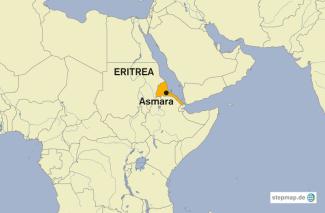Horn of Africa
30 years of guerrilla warfare

A small number of Eritrean students who were living in exile in Cairo created first the Eritrean Liberation Front (ELF). The main architects of this movement were Woldeab Woldemariam, Sheikh Ibrahim Sultan and Mohamed Adem. Some 300 Eritrean students joined them to launch an armed struggle. The movement was largely a creation by Muslim men who resented the Ethiopian presence in Eritrea. Radio broadcasting from Cairo was designed to reach out to all Eritrean people and to attract the attention of the international community.
The ELF used guerrilla tactics to attack Ethiopian troops. The freedom fighters were based in the bushes and mountains. They had to move constantly to escape the enemy. The ELF neither had advanced military equipment nor proper training.
The freedom fighters resented Ethiopia’s emperor Haile Selassie. However, things did not improve when he was overthrown by the Marxist revolutionary Mengistu Haile Mariam in 1974. Mengistu never accepted the Eritrean people’s quest for independence. He brutalised Eritrean people and built one of the most feared military forces in Africa. In his eyes, Eritrea would always be a part of Ethiopia.
The Mengistu regime dismantled local factories across Eritrea and ferried the parts to Addis Ababa. Eritrean men and women joined the liberation movement in large numbers. The Soviet Union gave the communist regime military assistance, but its heavy military equipment would sometimes fall in the hands of the freedom fighters. By 1978, the liberation movement was believed to have some 100,000 fighters.
In the late 1970s, however, ideological differences caused trouble within the ELF. Two factions engaged in a bitter struggle. This conflict became known as the “war of siblings”. The infighting was traumatic since loyalty is an issue of survival for any clandestine movement. Rebel commanders expect unquestioning obedience from their underlings and are fast to “eliminate” those they suspect to be traitors. In the end, the Eritrean People’s Liberation Front (EPLF) split from the ELF in 1981. It proved to be the stronger force in the long run.
During 30 years of armed conflict, the Eritrean women played a key role. Women from various backgrounds had joined the struggle for independence. Some had joined willingly while others had been recruited forcefully from their villages. They became part of the liberation movement by engaging in the battle field. Some were assigned to be trainers, teachers or doctors; some reached key military positions.
Music was of strategic significance for the Eritrean Liberation movement. The EPLF recruited talented musicians who could boost the fighters’ morale with patriotic songs and dancing. The EPLF even managed to set up a radio station in the mountains which broadcast information and music.
As the number of fighters increased over the years, the EPLF set up temporary military camps. The training programme lasted from one month to six months, and it included the hard physical work of building trenches while being attacked by the enemies. EPLF fighters still had to move constantly, and they relied heavily on camels. (df)








